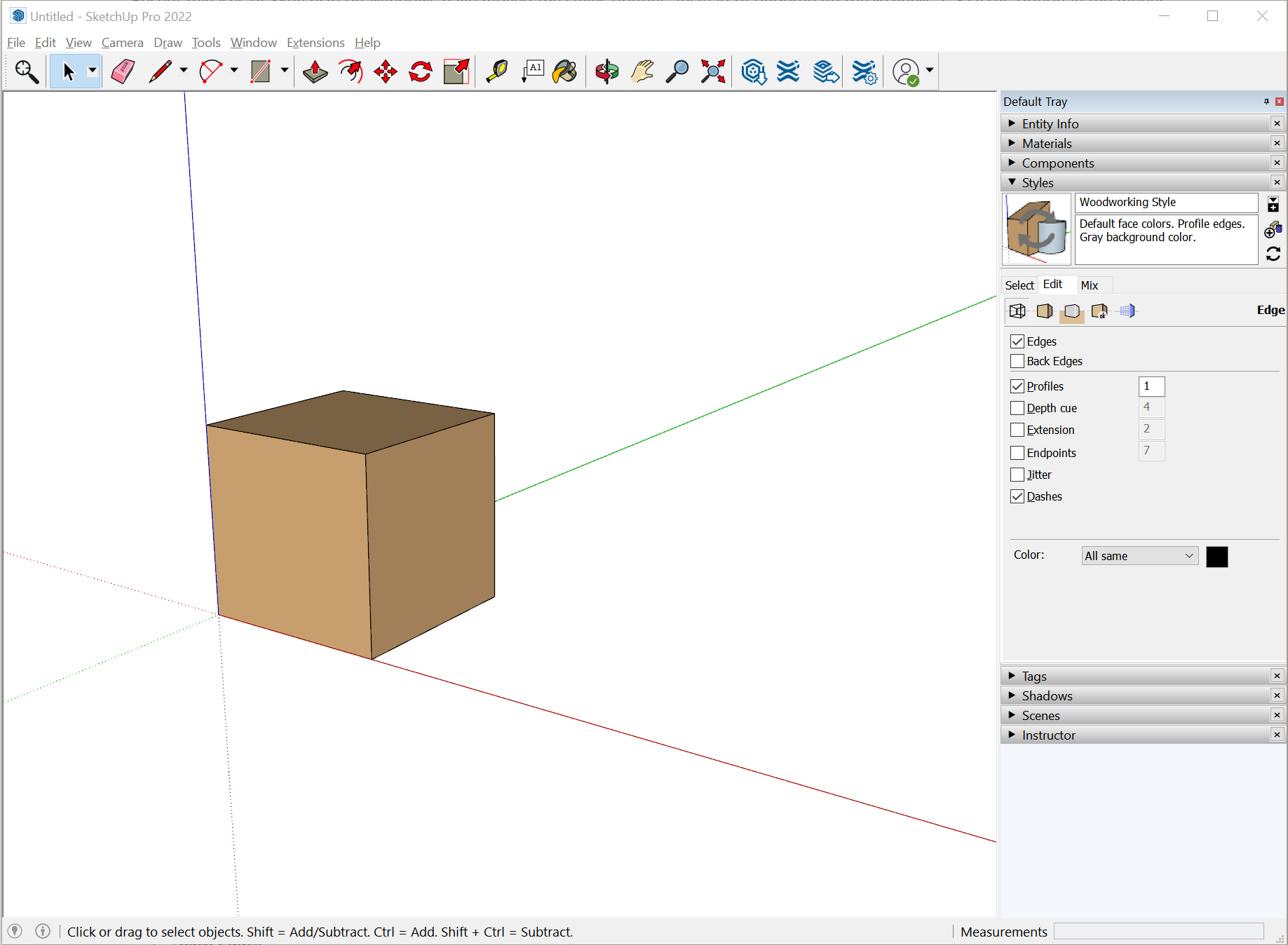Updates for Windows users
Recent releases of SketchUp on Windows have moved the styles options. Instead of underneath the Window > Styles option in the menus, you can find styles inside the Default Tray on the right side of the screen.

Transcript
David Heim (00:01): Welcome back. In this video, I'll help you get started with the SketchUp 3D design program and we'll begin by choosing the right version.
David Heim (00:12): There are several versions of SketchUp. Some are web-based. Some run on your desktop. You get them all with an annual subscription.
David Heim (00:24): There is one free version. It's web-based and it has a very different interface from the desktop version. Some tools are hidden behind others and you have to search to find other functions. Worst of all, for wood workers, you can't easily use SketchUp free to make a cut list. I think the best value is SketchUp Pro, costs $299 a year. It's fully-featured, runs on your desktop, and it even comes with a version that'll run on a tablet.
David Heim (01:10): The full-featured versions of SketchUp come with a number of ready-made templates including one for woodworking. It does pay to customize the look of this template and here's what I recommend.
David Heim (01:29): Go to the Window tab and choose Styles and when that little window opens, click on the Edit button. Then, click on the farthest left of the five thumbnails you see under the Edit button. Make sure there's a check mark in the box for edges and in the box next to Profiles, change the number in there to a one. That gives you a nice thin line for your drawings.
David Heim (02:06): Go to the second thumbnail and if you want, you can change the front color of your shapes and the back colors. You can leave that alone though. The defaults are pretty good. Then in the middle thumbnail, uncheck the box for Sky And Ground and for the box labeled Background, use the RGB sliders and move them all the way to the right to give yourself a nice, pure white background. That's all you need to do there.
David Heim (02:50): You can close the Styles tab. Go back to Window and choose Model Info and choose Units. Set the format to fractional. You don't want architectural or decimal or any of those others and set the precision to 1/16th of an inch. That's all you really need to do.
David Heim (03:21): Finally, go to File. Save as template. Give it a name and make sure there's a check in the box that says Set As Default Template and then click Save and you're done. The next time you open SketchUp, this is the template you'll be using.
David Heim (03:56): Once you have SketchUp set up the way you like, you're ready to begin using it to make models. In the next video, I'll show you how to get started with a rundown of the program's tools.

